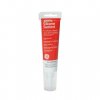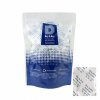MakeItRain
Pulling my weight
- Joined
- Aug 7, 2017
- Messages
- 401
- Reaction score
- 218
Guys, I think I know what the problem is. I think the gasket on the front housing is too short. Upon closer inspection, when I try to close the cover, it goes "clank". That tells me that the gasket isn't making a good seal between two metal pieces. The body and the cover. I've worked on automobiles and changed a lot of gaskets and I know that gaskets are supposed to provide a water and oil proof seal. When you mate two surfaces together like a valve cover, oil pan cover, or some other housing to a engine block, it shouldn't go clank. In my case, the camera goes clank when I re-assemble it.
The gasket they use "sinks" into the grooves of the body of the camera. That is fine but the problem is there isn't enough gasket material thickness for the two surfaces to mate properly, so this could result in an improper seal, causing vapor to get in. When the two pieces come together, it should be a nice soft thud... instead I get clank.
I'm going to have to do the silicone method of sealing this housing...an eliminating the gasket altogether and I'll post back tomorrow. There is no point of me testing this camera tomorrow in the rain again since I'm confident the gasket will fail to do its job.
(Red arrow pointing to the very, very thin gasket material protruding)

The gasket they use "sinks" into the grooves of the body of the camera. That is fine but the problem is there isn't enough gasket material thickness for the two surfaces to mate properly, so this could result in an improper seal, causing vapor to get in. When the two pieces come together, it should be a nice soft thud... instead I get clank.
I'm going to have to do the silicone method of sealing this housing...an eliminating the gasket altogether and I'll post back tomorrow. There is no point of me testing this camera tomorrow in the rain again since I'm confident the gasket will fail to do its job.
(Red arrow pointing to the very, very thin gasket material protruding)




